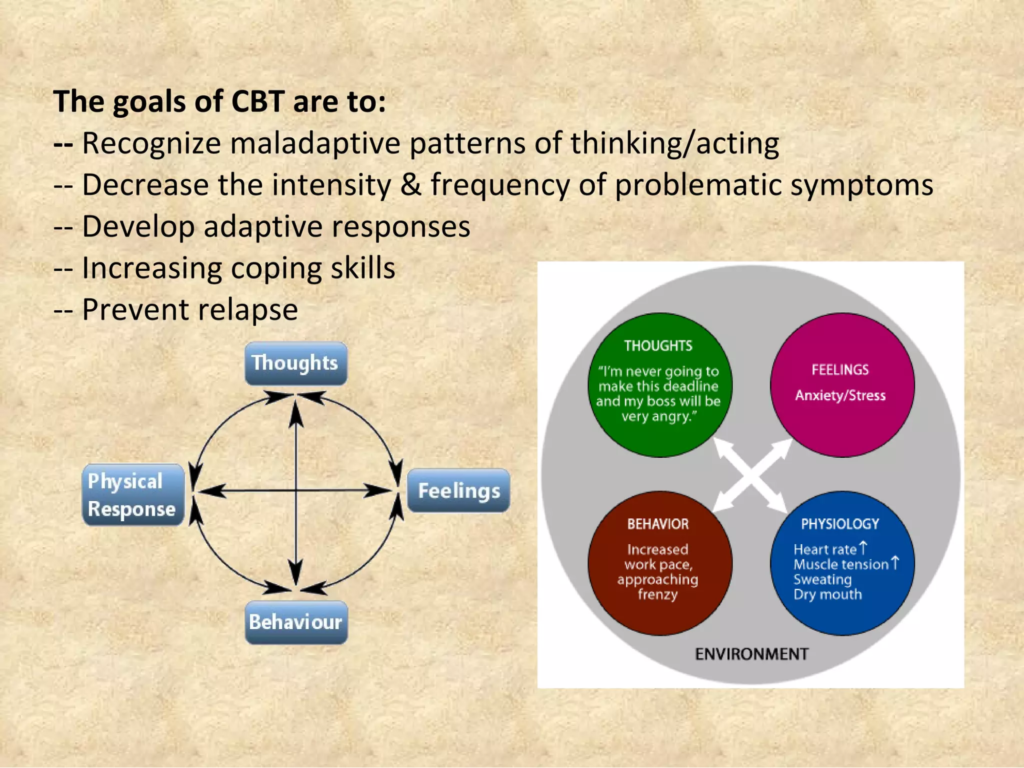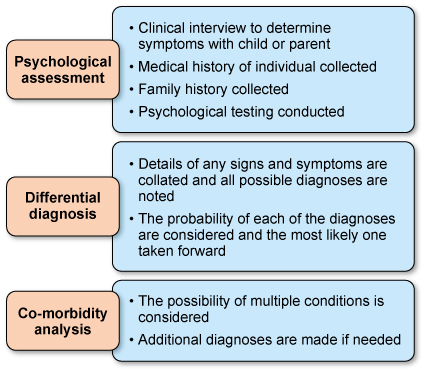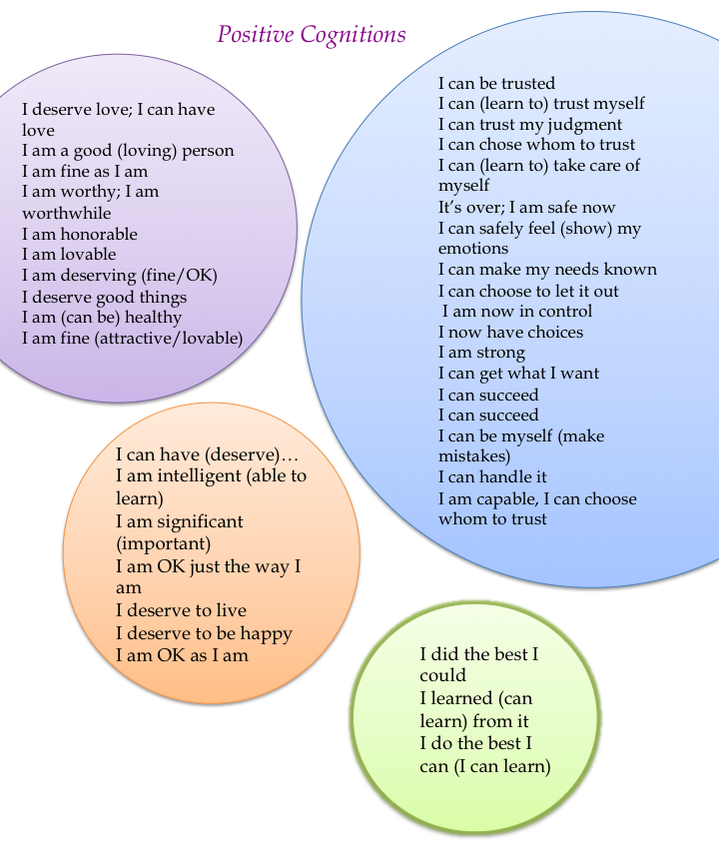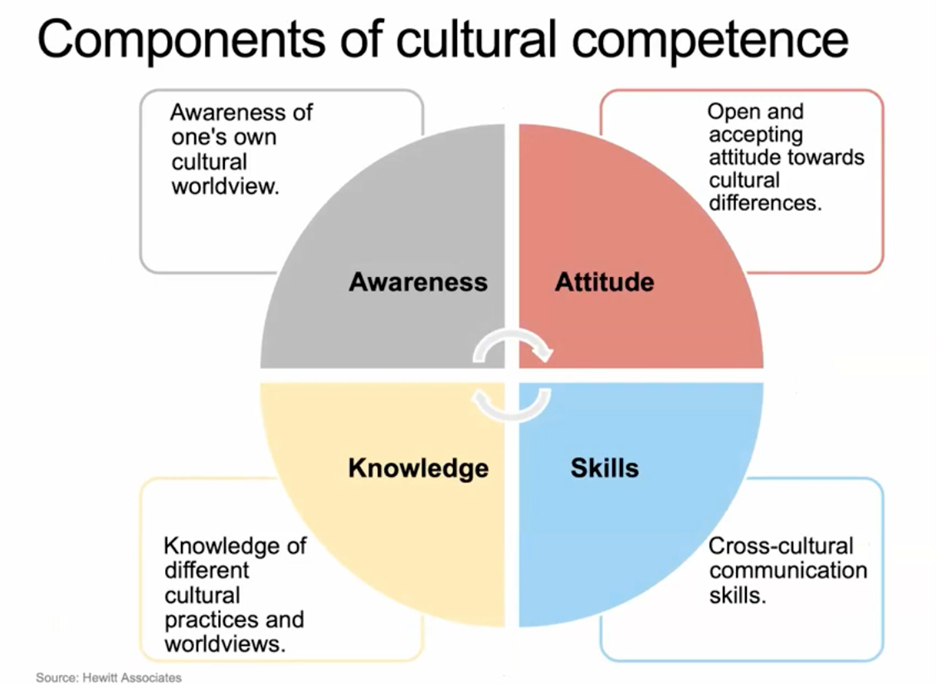loading...

by Tim Cassidy | Aug 27, 2024 | Educational
As a social worker, you’re no stranger to the complexities of human behavior. You’re on the front lines every day, providing support, resources, and guidance to individuals navigating challenges ranging from mental health issues like eating disorders to difficult life transitions. But even with all the tools and skills you’ve acquired, there’s always room to grow and refine your practice.
One way to do that is by deepening your understanding and application of Cognitive Behavioral Therapy (CBT). CBT certification isn’t just a feather in your cap; it’s a powerful way to enhance your effectiveness as a social worker and to make a tangible difference in the lives of those you serve.
Why CBT Certification?
CBT has long been recognized as one of the most effective forms of psychotherapy, especially for treating anxiety, depression, PTSD, and a host of other mental health issues. At its core, CBT is about helping individuals identify and change distorted thought patterns that lead to unhelpful behaviors and emotions. By becoming certified in CBT, you equip yourself with a structured, evidence-based approach that can be adapted to a wide variety of client needs.
For social workers, the value of CBT certification goes beyond the therapy room. It’s about enhancing your problem-solving toolkit and ensuring that you’re providing the most effective interventions. Whether you’re working in schools, hospitals, private practice, or community agencies, the principles of CBT can be applied to nearly every scenario. It offers a practical approach to helping clients develop coping strategies, build resilience, and make lasting changes in their lives.

Image Source
The Real-World Benefits of CBT Certification
Let’s talk about how CBT certification can make a concrete impact on your daily work. Consider a social worker who’s spent years working with at-risk youth. This population often struggles with issues like low self-esteem, substance abuse, and unstable family environments. Traditional support methods can sometimes feel like putting a band-aid on a deeper wound.
However, with CBT, you’re not just addressing the symptoms but getting to the root of the problem by helping young clients challenge negative thinking patterns and replace them with more constructive ones.
Imagine the satisfaction of seeing a client who once felt hopeless about their future start to make positive changes, such as attending school regularly or engaging in healthier relationships, because they’ve learned how to control their negative thoughts. That’s the kind of transformation CBT can facilitate.
Another example is in the realm of family social work. Families in crisis often need more than just resources and referrals; they need someone who can help them break out of destructive cycles of behavior. As a social worker, you can help family members identify dysfunctional communication patterns and replace them with healthier ones by using CBT techniques.
Additionally, it empowers individuals within the family to approach conflicts differently.
Enhancing Your Professional Credibility
In a field where practical experience is highly valued, it’s easy to overlook the importance of continued education. However, the reality is that the mental health landscape is constantly evolving, and what worked a decade ago may not be as effective today. Your CBT certification won’t just keep you current; it’ll position you as an industry leader.
Let’s say you’re a social worker looking to transition into a supervisory or training role. Having CBT certification on your resume can be a significant differentiator. It signals to employers and colleagues that you’re committed to providing the highest standard of care, and that you have a specialized skill set that can be passed on to others in your team.
Moreover, CBT certification is often a requirement or strong recommendation for roles in specialized areas such as mental health counseling, school social work, or trauma-focused care. Even if it’s not explicitly required, having this certification can give you a competitive edge when applying for jobs, negotiating salaries, or seeking promotions.
The Certification Process
Let’s break down what’s involved in getting certified. The process typically begins with completing a certain number of hours of CBT-specific training. This can be done through workshops, online courses, or formal education programs. Many social workers find that online courses are particularly convenient, allowing them to fit training into their busy schedules without compromising their current responsibilities.
After completing the required training, the next step is to put into practice what you’ve learned through supervision. This is where you’ll start to see the real-world application of CBT techniques with your clients. Supervision is a key part of the certification process, as it ensures that you’re using CBT methods correctly and effectively. During this period, you’ll receive feedback and guidance from an experienced CBT practitioner, which is invaluable for honing your skills.
Finally, you’ll need to pass a certification exam. This typically involves a combination of multiple-choice questions and case-based scenarios, designed to test your knowledge and application of CBT principles. While the exam can be challenging, it’s also an opportunity to solidify your understanding of CBT and ensure you’re fully prepared to incorporate it into your practice.
Expand Your CBT Horizon Through Online CEUs
Feeling overwhelmed with licensure requirements? Worry no more. Online CE Credits offers digestible, hassle-free professional development courses 24/7. No due dates. No deadlines. Earn over 20 credits in just 20 days by enrolling in the accredited programs below:
Incorporating CBT into Your Social Work Practice
Once you’re certified, the real work begins—integrating CBT into your daily practice. This might seem daunting at first, especially if you’re already juggling a heavy caseload, but the beauty of CBT is its flexibility. It can be adapted to fit various settings and client needs.
Start by introducing CBT concepts in your initial assessments. For example, when meeting with a new client, consider using a thought record to help them identify and analyze their automatic thoughts. This can give you valuable insights into their cognitive patterns and provide a foundation for your work together.
In group settings, CBT techniques like role-playing or group discussions about common cognitive distortions can be particularly effective. These exercises not only help clients understand their own thought patterns but also foster a sense of community as group members realize they’re not alone in their struggles.
For clients who are dealing with long-term issues, such as chronic depression or anxiety, CBT can be used to break down their problems into more manageable parts. By focusing on small, achievable goals, clients can begin to see progress more quickly, which can be incredibly motivating.

The Impact on Your Clients
One of the most rewarding aspects of becoming CBT-certified is seeing the positive changes in your clients. CBT is often described as a brief, solution-focused therapy, but its effects can be long-lasting. Clients who engage in CBT often report feeling more in control of their thoughts and behaviors, which can lead to significant improvements in their overall quality of life.
For example, a client struggling with anxiety might initially feel overwhelmed by their symptoms, but through CBT, they learn to challenge and change the thoughts that trigger their anxiety. Over time, they may find that their anxiety no longer controls their lives, allowing them to engage in activities they once avoided.
Another client dealing with depression might start to recognize the negative thought patterns that contribute to their low mood. By using CBT techniques, they can begin to reframe these thoughts and develop a more positive outlook, leading to improved mood and increased motivation.
As a social worker, seeing these kinds of changes in your clients is incredibly fulfilling. It’s a reminder of why you chose this career in the first place—to help people make meaningful, lasting changes in their lives. And with CBT certification, you’re better equipped than ever to do just that.
Making the Commitment
Pursuing CBT certification is a significant commitment, both in terms of time and effort. But for social workers dedicated to providing the best possible care for their clients, it’s a commitment worth making. Besides enhancing your professional skill set, it gives you an opportunity to make a deeper impact on those around you.
If you’re ready to take your career to the next level, consider exploring the CBT certification programs available to you. Whether you choose an online course, an intensive workshop, or a formal education program, the knowledge and skills you’ll gain will be invaluable. And most importantly, your clients will reap the benefits of your enhanced expertise, leading to better outcomes and a brighter future for everyone involved. Start your journey now!

by Tim Cassidy | Aug 27, 2024 | Educational
ADHD (Attention-Deficit/Hyperactivity Disorder) diagnosis has always been a complex process. Clinicians need to sift through layers of symptoms, patient history, and often subjective reports to determine the right diagnosis. With the rise of digital health tools, though, this process is starting to shift.
One tool that stands out is Creyos, formerly known as Cambridge Brain Sciences. Creyos has developed an innovative approach to cognitive assessment, making it a powerful asset in diagnosing ADHD. This blog will explore how Creyos can become an indispensable tool for clinicians striving to streamline their ADHD diagnostic process.
The Challenge of ADHD Diagnosis
(Diagnostic steps for ADHD in children and adolescents)

Image Source
Diagnosing ADHD is far from straightforward. It’s a condition that can present itself in various ways—some patients show hyperactivity, others struggle with attention, and many experience a combination of both. Additionally, ADHD symptoms can overlap with other disorders, such as anxiety or depression, further complicating the diagnostic process. Traditional methods, including interviews and standardized questionnaires, are helpful but can leave room for interpretation and subjective bias.
Clinicians face the challenge of differentiating ADHD from other conditions while also considering the influence of environmental factors, patient history, and individual variability. This is where a tool like Creyos can make a significant difference.
Creyos: A Game-Changer in Cognitive Assessment
Creyos brings something new to the table with its focus on objective cognitive assessment. By leveraging the power of computer-based tasks, Creyos measures various cognitive functions, including memory, attention, reasoning, and verbal abilities. For clinicians, this means accessing reliable, data-driven insights into a patient’s cognitive profile, which can be particularly useful in diagnosing ADHD.
Creyos isn’t just about delivering results; it’s about enhancing understanding. The platform offers a clear, accessible breakdown of cognitive performance, helping clinicians identify the specific areas where a patient may be struggling. This can be instrumental in differentiating ADHD from other disorders as well as in tailoring treatment plans to the individual’s needs.
How Creyos Works in Practice?
Using Creyos in a clinical setting is both straightforward and effective. After setting up an account, clinicians can invite patients to complete a series of cognitive tasks. These tasks are designed to assess various aspects of brain function in a short period, usually around 30 minutes.
The tasks themselves are engaging and easy to understand, which is particularly important for patients with ADHD who may struggle with prolonged focus. Once the tasks are completed, Creyos generates a detailed report that includes scores on different cognitive domains. Clinicians can then review these results to see where a patient may fall short compared to normative data.
For example, a patient with ADHD might show significant deficits in attention and impulse control tasks, while their memory and reasoning skills might be within normal ranges. This pattern can provide a more precise understanding of the patient’s difficulties, leading to a more accurate diagnosis.
The Benefits of Objectivity
One of the primary advantages of using Creyos is its objectivity. Cognitive tasks are less susceptible to the biases that can influence interviews and self-reported questionnaires. This objectivity is crucial in ADHD diagnosis, where patients might underreport or overreport symptoms, either unintentionally or due to the nature of the disorder itself.
By relying on performance-based assessments, clinicians can gather data that reflects the patient’s actual cognitive abilities rather than their perception of those abilities. This makes it easier to identify true cognitive deficits that align with ADHD, improving the accuracy of the diagnosis.
Supporting Treatment and Monitoring Progress
Creyos doesn’t stop at diagnosis. The platform can also be used to monitor a patient’s progress over time. As treatment for ADHD typically involves behavioral strategies, medication, or a combination of both, tracking cognitive performance can offer valuable insights into how well these interventions are working.
For instance, a patient who begins medication for ADHD might show improvement in attention tasks after a few weeks. By comparing these results with baseline data, clinicians can objectively assess the effectiveness of the treatment and make informed decisions about whether to continue, adjust, or change the treatment plan.
This ability to track progress with objective measures is especially useful in a clinical setting, where ongoing evaluation is key to long-term success in managing ADHD.
Enhancing Patient Engagement
Another significant benefit of Creyos is its potential to enhance patient engagement. ADHD patients, particularly children and adolescents, might find traditional assessment methods tedious or stressful. Creyos, on the other hand, offers a more interactive and less intimidating experience. The tasks resemble games more than tests, which can reduce anxiety and increase cooperation, leading to more accurate assessments.
Moreover, the visual and easy-to-understand nature of the results can help patients and their families better understand the diagnosis. When patients can see their own cognitive strengths and weaknesses laid out clearly, it can foster a greater sense of involvement in the treatment process. This understanding can also lead to increased adherence to treatment recommendations, as patients are more likely to follow through when they comprehend the rationale behind the interventions.
Immerse Yourself Into Battle-Tested ADHD Continuing Education
Because ADHD is a challenging mental health condition, therapists must be well-versed in up-to-date interventions to treat the illness. Luckily, Online CE Credits provides the latest programs from seasoned mental health professionals without breaking the bank. The best part? You can earn credits in your pajamas from the comfort of your home. Invest in your professional growth by choosing the certifications below:
Integrating Creyos into Your Practice
For clinicians considering incorporating Creyos into their diagnostic process, the good news is that it’s relatively easy to do. The platform is designed to be user-friendly, with minimal setup required. Clinicians can quickly learn how to administer the tasks and interpret the results, making it a practical addition to any practice.
Furthermore, Creyos is flexible enough to complement existing diagnostic tools. It doesn’t require clinicians to abandon their current methods, but instead offers an additional layer of data that can enhance the overall diagnostic process. Whether used as a primary tool or as a supplementary measure, Creyos can provide the kind of detailed cognitive insights that are often missing from traditional assessment methods.

Addressing Common Concerns
Some clinicians might wonder about the reliability of a digital tool like Creyos compared to more established methods. It’s important to note that Creyos has been developed based on decades of research in cognitive science. The tasks used on the platform are grounded in well-established theories and have been validated through numerous studies.
Additionally, Creyos offers the advantage of consistency. Unlike human-administered tests, which can vary depending on the examiner’s technique or interpretation, Creyos provides standardized assessments every time. This consistency helps ensure that the results are reliable and can be compared across different time points or patient groups.
The Future of ADHD Diagnosis
As healthcare continues to embrace digital tools, the role of platforms like Creyos is likely to grow. Clinicians who integrate these tools into their practice can benefit from more accurate, objective data, leading to better diagnostic outcomes for their patients. In the case of ADHD, where the diagnostic process can be particularly challenging, Creyos offers a promising solution.
Ultimately, Creyos represents a step forward in cognitive assessment, providing clinicians with a powerful tool to enhance their diagnostic accuracy and improve patient outcomes. As ADHD diagnosis continues to evolve, tools like Creyos will undoubtedly play a crucial role in shaping the future of mental health care.
You can improve the accuracy, engagement, and personalized care of your patients by integrating Creyos into your practice. Also, ADHD continuing education can amplify your therapy techniques and enable you to fulfill your licensure requirements effortlessly. Begin your learning experience today by creating an account with Online CE Credits.

by Tim Cassidy | Aug 27, 2024 | Certificate
When working with Eye Movement Desensitization and Reprocessing (EMDR), selecting and applying the right cognitions is critical to the therapy’s success. As many therapists know, EMDR isn’t just about eye movements or tapping; it’s about carefully guiding the client through a process that helps them reprocess traumatic memories and replace negative beliefs with more adaptive ones.
EMDR therapy involves eight phases, but one of the most intricate aspects is the cognitive interweave—selecting and refining cognitions to ensure they resonate deeply with the client. This part of the therapy is essential because the success of EMDR often hinges on how well these cognitions are crafted and utilized.
Understanding the Core of EMDR Cognitions
Cognitions in EMDR can be broken down into two categories: Negative Cognitions (NCs) and Positive Cognitions (PCs). Negative Cognitions are the distorted beliefs clients hold about themselves due to traumatic experiences, while Positive Cognitions represent the more adaptive beliefs they aim to develop.
For instance, a client may come in with a Negative Cognition such as “I am powerless,” stemming from a childhood trauma.
The goal would be to replace the biased beliefs with a Positive Cognition, such as “I am in control now.” The challenge lies not just in identifying these cognitions but in making them resonate on a visceral level.

Image Source
The Art of Crafting Effective Cognitions
Effective cognitions are those that strike a chord with the client, facilitating the reprocessing of trauma. To do this, it’s important to consider the client’s language, values, and worldview. A cognition that feels generic or overly clinical may not have the same impact as one that aligns with the client’s personal experiences.
One practical approach is to engage the client in the process of identifying both Negative and Positive Cognitions. Instead of imposing a standard set of beliefs, involve the client in the exploration of their own thoughts and feelings. This collaboration not only ensures that the cognitions are meaningful but also empowers the client by giving them an active role in their healing process.
Another key aspect is specificity. A Positive Cognition that is too broad, such as “I am good enough,” may lack the personal relevance needed to be effective. On the other hand, a more specific cognition like “I did the best I could in that situation” might resonate more with a client who struggles with feelings of guilt or regret.
Tailoring Cognitions to the Client’s Developmental Stage
Clients often come into therapy at different developmental stages, and their capacity to engage with certain cognitions will vary accordingly. For example, a young adult client might still be in the process of forming their identity and could benefit from Positive Cognitions that reinforce self-worth, like “I am capable of making good decisions.” Meanwhile, an older client grappling with past regrets might need cognitions that focus on self-forgiveness or acceptance, such as “I accept my past and can learn from it.”
Understanding where a client is developmentally allows therapists to tailor cognitions that not only fit their current life stage but also encourage growth. This requires a deep awareness of human development and a keen ability to listen to the client’s needs and aspirations.
The Role of Cultural Sensitivity in Cognition Selection
Cultural sensitivity is another crucial factor when selecting cognitions in EMDR. A cognition that works well in one cultural context may not resonate in another. For instance, in some cultures, the concept of individualism is highly valued, and a cognition like “I am in control of my destiny” may be empowering. In contrast, in more collectivist cultures, where community and family are central, a cognition like “I contribute positively to my community” may be more appropriate.
To navigate this, it’s essential to have an ongoing dialogue with the client about their cultural background and how it influences their beliefs. By doing so, therapists can ensure that the Positive Cognitions not only promote healing but also respect and align with the client’s cultural identity.
Adjusting Cognitions During the EMDR Process
EMDR is not a linear process, and the same is true for the use of cognitions. As therapy progresses, the client’s understanding of their trauma and beliefs may evolve, necessitating adjustments to the cognitions being used. It’s important to remain flexible and open to revising Negative or Positive Cognitions as new insights emerge.
For example, a client might initially identify a Negative Cognition like “I am unsafe,” which, after several sessions, might shift to something more nuanced, such as “I can’t trust others.” In response, the therapist might adjust the Positive Cognition from “I am safe now” to something that addresses the trust issue more directly, like “I can choose who to trust.”
This ongoing refinement is a normal part of the EMDR process and should be embraced as a sign that the therapy is working. As the client’s understanding deepens, the cognitions must adapt to reflect their current state of mind and progress in therapy.
Overcoming Challenges in Cognition Selection
One of the most common challenges therapists face when working with EMDR cognitions is resistance from the client. Some clients may find it difficult to connect with Positive Cognitions, especially if they’ve held onto Negative Cognitions for a long time. This resistance can be addressed by validating the client’s experience and pacing the introduction of Positive Cognitions to avoid overwhelming them.
In some cases, it may be necessary to work on desensitizing the Negative Cognition before fully introducing a Positive Cognition. This can involve several sessions of processing the trauma without yet focusing on installing a Positive Cognition, allowing the client to come to terms with their experience gradually.
It’s also worth noting that not all clients will respond to Positive Cognitions in the same way. Some may require more time or a different approach to fully embrace these new beliefs. Patience and persistence are key, as is the willingness to explore alternative cognitions if the initial ones don’t seem to be effective.
The Power of Collaboration in Cognition Development
Collaboration with the client in developing cognitions cannot be overstated. When clients are active participants in identifying and refining their cognitions, they’re more likely to feel invested in the process and experience greater benefits from the therapy. This collaborative approach fosters a sense of ownership and empowerment, which are crucial for lasting change.
Encouraging clients to voice their thoughts and feelings about the proposed cognitions can lead to a deeper understanding of what will be most effective for them. It also helps to build trust and rapport, as the client sees that the therapist is genuinely interested in their unique perspective.
Upgrade EMDR Techniques To Treat Negative Cognitions Effectively
Enhance your therapeutic practice with our affordable, accredited online EMDR courses. Learn from experienced therapists and gain the skills to address negative cognitions effectively. Our programs are designed to fit your busy schedule while providing you with the knowledge and tools you need to help clients overcome limiting beliefs and achieve lasting change.
Enroll in the programs below and unlock the power of EMDR today:
Practical Applications and Case Examples
Consider the case of a client who survived a serious car accident and developed the Negative Cognition “I am always in danger.”
Initially, the therapist might suggest a Positive Cognition like “I am safe now,” but the client might struggle to connect with this due to ongoing anxiety. Through collaboration, they might settle on a more nuanced cognition like “I can take steps to protect myself,” which acknowledges the client’s fear while empowering them to regain a sense of control.
Another example could be a client who grew up in a highly critical household and developed the Negative Cognition “I am not good enough.”
A broad Positive Cognition like “I am worthy” might feel too distant or abstract for the client to accept. Instead, a more specific cognition like “I have valuable skills and strengths” could be more impactful, as it ties directly to the client’s accomplishments and areas of competence.
These examples illustrate the importance of flexibility and creativity in developing cognitions that truly resonate with clients. By being attuned to the client’s needs and working collaboratively, therapists can help them move from a place of pain and negativity to one of healing and growth.
Understand EMDR Negative Thoughts
Mastering the art of selecting and refining EMDR cognitions is essential for effective therapy. During therapy, therapists can facilitate deep and lasting change by engaging clients in the process, tailoring cognitions to their developmental stage, and remaining flexible.
Each client’s journey is unique, and the key to success lies in the therapist’s ability to adapt and collaborate, ensuring that the cognitions used in EMDR are both meaningful and transformative for the individual. Take the next step in your professional journey.

by Tim Cassidy | Aug 27, 2024 | Educational
Whether a seasoned therapist or a newly licensed clinician, getting to grips with California Law and Ethics helps maintain a thriving practice. This guide will explore the critical components of California Law and Ethics courses and explain why they’re indispensable and how they advance your professional life.
What Is the California Law and Ethics Exam?
California Law and Ethics is a course that teaches professional practitioners about the ethical principles and legal mandates applicable to their practice. And Pearson Vue, the testing vendor, administers the exam, which is 40% law and 60% ethics.
According to the Board of Behavioral Sciences, consider these California Law and Ethics course requirements:
- If you’re an Associate Clinical Social Worker (ACW), Associate Marriage Family Therapist (AMFT), or Associate Professional Clinical Counselor (APCC), you’re eligible to take the exam.
- You may still be eligible for the law and ethics test if you’re an out-of-state applicant without ACW, AMFT, or APCC registrations. You must complete and submit the LCSW, LMFT, or LPCC application for approval.
- You must take the exam even if you hold multiple registrations. For example,
- ASWs will take the LCSW Law and Ethics test.
- AMFTs will take the LMFT Law and Ethics exam.
- APCCs will take the LPCC Law and Ethics test.
Why Should You Take a Law and Ethics Course?
The field of mental health uniquely bridges personal well-being with legal regulation. For example, beneficence requires you to act in your client’s best interests, while nonmaleficence requires you to avoid causing harm.
And because you’re privy to your client’s most intimate aspects, you should grasp ethical principles and legal requirements to ensure their protection. Also, upholding professional standards safeguards you from legal pitfalls.
Here are more reasons:
Enhances Professional Competence
Undertaking a California law and ethics course improves your professional competence. These programs provide updated information on state laws, recent legislative changes, and evolving ethical standards.
By staying informed, you can manage complex situations confidently and with clarity. As a result, your practice remains compliant with state laws and aligned with best practices.
Protects Your Practice
Knowing the law and ethics protects your practice. This is because legal boundaries and ethical guidelines help you make decisions based on accurate information. So this knowledge reduces the risk of malpractice claims and disciplinary actions.
A solid grounding in law and ethics is your first defense against potential legal challenges. This applies whether you manage confidentiality issues, have dual relationships, or fulfill mandatory reporting laws.
Promotes Client Welfare
At the heart of mental health practice is the client’s welfare. Ethical principles such as beneficence, non-maleficence, autonomy, and justice guide the therapeutic relationship. Law and ethics courses reinforce these principles. They provide you with the knowledge to handle ethical dilemmas and legal obligations to prioritize client welfare. This builds trust and rapport with clients and enhances therapeutic outcomes.
What To Expect from a California Law and Ethics Course Online

California Law and Ethics programs cover various topics relevant to mental health practice. They typically include:
Confidentiality and Privacy
Confidentiality is a cornerstone of therapeutic practice. So courses explore California’s confidentiality laws, including:
You learn the nuances of maintaining client privacy, handling electronic records, and the circumstances under which confidentiality can be legally breached.
Informed Consent
To obtain informed consent, you must know the legal requirements. Training programs cover the elements of informed consent, including explaining the nature of the therapy, potential risks, benefits, and alternatives. Also, they teach you how to obtain consent voluntarily and keep records of the
agreements.
Mandated Reporting
California law imposes specific reporting obligations on mental health professionals. Law and ethics certifications provide detailed information on mandated reporting requirements for child abuse, elder abuse, and dependent adult abuse. You explore how to recognize signs of abuse, the process for reporting, and the legal protections afforded to reporters.
Dual Relationships and Boundaries
Managing dual relationships and maintaining professional boundaries can be challenging. As a result, courses explain the ethical and legal considerations surrounding dual relationships. This helps you understand when they might be appropriate and how to handle them to avoid conflicts of interest and potential harm to the client.
Maintains Professional Competence and Continuing Education
A professional’s ethical obligation is to maintain competence. Law and ethics programs emphasize continuing education, self-assessment, and professional development. This keeps your knowledge and education current and relevant.
How To Select the Right Course
Choosing the right California law and ethics course enriches your learning experience. Here are some factors to consider when choosing a certification:
Accreditation and Approval
Be sure the course is accredited and approved by recognized bodies such as the California Board of Behavioral Sciences (BBS) or other relevant professional organizations. Accreditation shows that the course meets the required standards for content and instruction.
Instructor Expertise
The instructor’s experience is also vital. Be sure to look for courses from established professionals with a strong background in mental health practice and legal and ethical issues. Instructors with real-world experience can provide valuable insights and practical examples.
Course Format and Flexibility
Consider the format that best suits your learning style and schedule. Online courses offer flexibility and convenience, allowing you to learn at your own pace and from the comfort of your home. On the other hand, in-person courses promote interactive learning and networking with peers.
Course Content and Curriculum
Review the course content and curriculum to see if the topics are relevant to your practice. A well-developed course should address legal and ethical issues, providing theoretical knowledge and practical applications.
Ignite Your Career in Continuing Education (CE)
Wondering how CE can be a catalyst for career development? Online CE Credits is a therapist-managed platform with over 250 training programs from seasoned practitioners. The courses explore many relevant mental health topics to upgrade your profession while fulfilling licensure requirements. And they’re perfect for busy clinicians since they’re available online 24/7.
Here are some programs to explore:
Also, learn more about CE certifications in domestic violence and anger management.
What Are the Benefits of Online CE Credits?

Online continuing education courses offer several advantages. They provide access to high-quality education without disrupting your practice or personal life. Here’s why online CE credits are an excellent choice:
Flexibility and Convenience
Online courses allow you to study at your own pace, fitting learning around your professional and personal commitments. You can access course materials anytime, anywhere, making it easier to balance work, education, and life.
Access to Expert Instructors
Online platforms feature courses from leading experts. You learn from highly qualified professionals who might be geographically distant but are accessible digitally.
Interactive and Engaging Learning
Modern online courses are interactive and engaging. They may include video lectures, interactive case studies, discussion forums, and quizzes to enhance learning and retention. This interactive approach keeps you engaged and enables you to apply what you learn to your practice.
Cost-Effective
Online programs are more cost-effective than traditional in-person courses. You save on travel expenses, accommodation, and time away from your practice. The lessons also offer competitive pricing and various subscription options to meet different budgets.
Invest in Your Professional Future with Law and Ethics
A California Law and Ethics course is an investment in your professional future.
It equips you with the knowledge and skills to navigate mental health’s complex legal and ethical considerations. Also, the program improves your professional competence and client care.
Staying informed and up-to-date with the latest legal and ethical guidelines protects your practice. It also lets you maintain the highest standard of care for your clients. Your commitment to ongoing education and professional development shows dedication to your clients.
Let Online CE Credits Help You Dominate Your Space
Online CE Credits is your best bet If you’re looking for a learning environment with supportive and experienced professionals. You can gain expert knowledge from therapists through one-on-one interactions, webinars, and flexible payment options. In addition, all the online courses are accredited and nationally approved by recognized professional bodies. Stop settling for outdated mental health practices. Get evidence-based training to transform your clinical skills.
FAQs
How long is the CA Law and Ethics exam?
The CA Law and Ethics exam is 75 questions long and has a time limit of 90 minutes. However, the 25 questions don’t count toward the final score, as they are experimental.
What are the continuing education requirements for LCSW in California?
36 hours every 2 years. The license expires based on the date of issuance.
How many hours of ethics are required for continuing education each year in CA?
In California, 4 hours of ethics are required for continuing education each year.
How many questions are on the California LCSW Law and Ethics exam?
The California LCSW law and ethics exam consists of 75 multiple-choice questions.
What is the passing score for the CPA Ethics exam in California?
The passing score for the CPA Ethics exam in California is 90%.

by Tim Cassidy | Aug 20, 2024 | Certificate
Because of the ever-changing social work landscape, the ability to effectively engage with diverse populations is not just an asset; it’s a necessity. Social workers should provide support and resources to individuals from a wide range of cultural backgrounds. As a result of increasing diversity in communities, mastering cultural competence has become more critical than ever.
This is where specialized Continuing Education Units (CEUs) come into play. These educational opportunities empower social workers to enhance their cultural competence, resulting in improved client care.
Understanding Cultural Competence in Social Work

Cultural competence refers to the ability of social workers to understand, appreciate, and interact with individuals from cultures different from their own.
The National Association of Social Workers (NASW) defines social competence as “the process by which individuals and systems respond respectfully and effectively to people of all cultures, languages, classes, races, ethnic backgrounds, religions, spiritual traditions, immigration status, and other diversity factors in a manner that recognizes, affirms, and values the worth of individuals, families, and communities and protects and preserves the dignity of each.”
As a result, you must integrate cultural awareness into your practice. Cultural competence involves a deep understanding of one’s own cultural identity, an appreciation for the cultural backgrounds of others, and the skills to adapt interventions and communication styles accordingly.
Why Cultural Competence Is Crucial?
In social work, cultural competence is vital for several reasons:
Improved Client Outcomes:
When social workers are culturally competent, they can better understand their clients’ needs, leading to more effective interventions and improved outcomes.
Building Trust:
Clients are more likely to trust and engage with social workers who demonstrate respect for their cultural values and beliefs.
Ethical Practice:
Cultural competence aligns with the ethical principles of social work, including respect for the dignity and worth of individuals and the promotion of social justice.
Navigating Complex Issues:
Many social workers deal with complex issues such as immigration, racism, and systemic inequality. Cultural competence enables them to navigate these challenges effectively.
The Importance of CEUs in Enhancing Cultural Competence
Continuing Education Units (CEUs) are essential for social workers to stay updated on the latest research, best practices, and emerging trends in their field. When it comes to cultural competence, specialized CEUs offer targeted training that goes beyond general knowledge.
These courses provide in-depth insights into specific cultural groups, issues related to cultural diversity, and strategies for improving cultural competence in practice.
Here’s why specialized CEUs are crucial for mastering cultural competence in social work:
Continuous Learning:
Cultural norms and values are dynamic and can change over time. CEUs ensure that social workers are continually learning and adapting their practices to meet the needs of diverse populations.
Specialized Knowledge:
General training in cultural competence provides a foundation, but specialized CEUs dive deeper into specific cultural contexts, allowing social workers to gain expertise in working with particular groups.
Compliance and Certification:
Many states and professional organizations require social workers to complete a certain number of CEUs focused on cultural competence to maintain their licenses. These requirements emphasize the importance of cultural competence in ethical practice.
Enhanced Professional Development:
Specialized CEUs not only enhance cultural competence but also contribute to overall professional growth. They provide social workers with the skills and knowledge needed to excel in their careers and provide the highest level of care to their clients.
Key Areas Covered in Specialized Cultural Competence CEUs
Specialized CEUs in cultural competence cover a wide range of topics, each designed to equip social workers with the tools they need to work effectively with diverse populations. Below are some key areas typically covered in these courses:
Understanding Cultural Identity and Bias:
- CEUs often begin with a focus on self-awareness, helping social workers explore their own cultural identities and unconscious biases. This is a critical first step in developing cultural competence, as it allows practitioners to recognize how their own cultural background may influence their interactions with clients.
- Courses may include exercises and case studies that challenge social workers to identify and address their biases, fostering a more inclusive and empathetic approach to practice.
Cultural Humility:
- Cultural humility is an ongoing process of self-reflection and self-critique, acknowledging that understanding another’s culture is a lifelong journey. CEUs that focus on cultural humility teach social workers to approach each client with an openness to learn from them rather than assume expertise in their culture.
- This concept encourages social workers to build partnerships with clients based on mutual respect and learning, rather than imposing their own cultural norms.
Culturally Responsive Interventions:
- One of the most practical aspects of specialized CEUs is their training in culturally responsive interventions. Social workers learn to adapt their therapeutic techniques, communication styles, and intervention strategies to align with the cultural values and needs of their clients.
- This might include incorporating culturally specific practices, such as using spiritual or community-based approaches that resonate with the client’s cultural background.
Working with Specific Populations:
- Many CEUs offer focused training on working with specific cultural groups, such as African American, Latinx, Asian American, Indigenous communities, or immigrant populations. These courses provide in-depth knowledge of the cultural, historical, and social factors that influence the experiences of these groups.
- Social workers learn about common challenges faced by these populations, such as systemic racism, acculturation stress, and historical trauma, and how to address these issues in a culturally competent manner.
Addressing Cultural and Linguistic Barriers:
- Communication is a critical aspect of social work, and language barriers can significantly impact the effectiveness of interventions. CEUs often cover strategies for overcoming linguistic barriers, such as working with interpreters, learning key phrases in the client’s language, or using culturally relevant non-verbal communication.
- Additionally, social workers may learn about the importance of culturally appropriate body language, tone of voice, and other subtle communication cues that vary across cultures.
Cultural Competence in Policy and Advocacy:
- Cultural competence isn’t limited to direct practice. Social workers also need to understand how cultural factors influence social policies and advocacy efforts. CEUs in this area cover topics such as advocating for culturally inclusive policies, understanding the impact of laws on specific cultural groups, and working to dismantle systemic barriers to equity.
- This training empowers social workers to be effective advocates for social justice, ensuring that the needs of diverse communities are represented in policy decisions.
Ethical and Legal Considerations:
- Specialized CEUs also address the ethical and legal aspects of cultural competence. This includes understanding the implications of cultural competence for informed consent, confidentiality, and professional boundaries.
- Social workers learn how to navigate ethical dilemmas that may arise when cultural values conflict with professional standards, ensuring that they uphold the highest ethical standards in their practice.
Ramp Up Your Cultural Competence in Social Work

In a world increasingly interconnected, cultural competence is essential for effective social work. Our specialized CE courses equip you with the tools to bridge cultural divides, build trust, and provide effective care to diverse client populations. Don’t miss this opportunity to deepen your understanding and enhance your practice. Start your journey today and become a more culturally competent therapist.
Also, learn more about the latest suicide therapeutic interventions.
Benefits of Mastering Cultural Competence Through Specialized CEUs
The benefits of mastering cultural competence through specialized CEUs are far-reaching. They impact not only the social workers themselves but also their clients, colleagues, and the broader community. Some of the key advantages include:
Enhanced Client Relationships:
Clients are more likely to engage and participate in the therapeutic process when they feel understood and respected. Cultural competence fosters stronger, more trusting relationships between social workers and clients, leading to better therapeutic outcomes.
Increased Effectiveness of Interventions:
Culturally competent social workers can tailor their interventions to be more relevant and effective for each client. This personalized approach increases the likelihood of successful outcomes, as interventions are more closely aligned with the client’s cultural values and experiences.
Professional Growth and Competence:
Specialized CEUs contribute to ongoing professional development, ensuring that social workers remain competent and confident in their ability to serve diverse populations. This enhances their skills and makes them more competitive in the job market.
Contribution to Social Justice:
By mastering cultural competence, social workers play a crucial role in promoting social justice. They’re better equipped to advocate for marginalized communities, challenge systemic inequalities, and work towards a more inclusive society.
Ethical Practice:
Cultural competence is an ethical imperative in social work. By pursuing specialized CEUs, social workers can meet their ethical obligations to respect the dignity and worth of all individuals, regardless of their cultural background.
Choosing the Right CEUs for Cultural Competence
Selecting the right CEUs is crucial for effectively enhancing cultural competence. Practitioners should look for accredited courses from experts in the field tailored to their specific practice needs. Here are some tips for choosing the right CEUs:
Accreditation:
Ensure that the CEUs are accredited by a recognized professional organization or educational institution. This guarantees that the courses meet high standards of quality and relevance.
Instructor Expertise:
Look for courses taught by instructors with extensive experience in cultural competence and social work. Instructors with practical experience in diverse settings can provide valuable insights and real-world examples.
Relevance to Practice:
Choose CEUs that align with your specific practice area or the populations you work with. For example, if you work primarily with immigrant communities, pick courses that focus on the cultural and social issues relevant to these groups.
Interactive and Practical:
Courses that include interactive components, such as case studies, role-playing, and group discussions, are often more effective in building cultural competence. Practical exercises allow you to apply what you’ve learned in real-world scenarios.
Ongoing Learning:
Cultural competence is a lifelong journey. Consider choosing CEUs that offer opportunities for ongoing learning and development, such as advanced courses or a series of related training.

Improve Your Professional Practice by Understanding Cultural Competence
Mastering cultural competence is essential for social workers to provide effective, ethical, and compassionate care to all clients. Specialized CEUs offer a valuable opportunity to deepen your understanding of cultural diversity, enhance your practice skills, and contribute to social justice. You can advance your professional practice but also make a meaningful impact on the lives of the individuals and communities you serve by investing in your cultural competence.
Master Cultural Competence with Online CE
Unleash your potential as a culturally competent social worker. Our professional CE programs equip you with the tools to bridge cultural divides, build trust, and provide effective care to diverse client populations. Seize the opportunity to expand your horizons. Begin your learning experience today and become a more empathetic and effective therapist.















